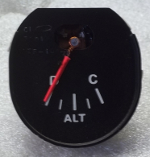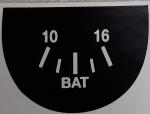- Joined
- Sep 8, 2018
- Messages
- 2,045
- Reaction score
- 1,144
- Location
- Ross, Ohio
- My Car
- 71 Sportsroof Bright Red.
Hi,
Trying to find out if anyone knows exactly where the wire splices are for a 71 Fastback ammeter. My oil and temp work on my center gauges but the amp does not. I have tested the gauge and it is good. I also tried a spare I have.
I have checked the wiring diagram but am unable to determine where number 654 and 655 splice are at. I have trace 654 and it is tied into 37 right after it comes out the fuse block connector. I don't know if this was done at the factory or not. I have traced 655 into the block connector but the wire is missing on the out side to the firewall.
The socket is empty where it should be at. I plan on running a new wire but am not sure exactly where to tie in at what point. Below is where 654 ties into 37 out of the back of the fuse block junction. The upper left hand corner is where 655 should be but it is missing.
Any help or ideas would be appreciated.

Trying to find out if anyone knows exactly where the wire splices are for a 71 Fastback ammeter. My oil and temp work on my center gauges but the amp does not. I have tested the gauge and it is good. I also tried a spare I have.
I have checked the wiring diagram but am unable to determine where number 654 and 655 splice are at. I have trace 654 and it is tied into 37 right after it comes out the fuse block connector. I don't know if this was done at the factory or not. I have traced 655 into the block connector but the wire is missing on the out side to the firewall.
The socket is empty where it should be at. I plan on running a new wire but am not sure exactly where to tie in at what point. Below is where 654 ties into 37 out of the back of the fuse block junction. The upper left hand corner is where 655 should be but it is missing.
Any help or ideas would be appreciated.

Last edited by a moderator:

























































